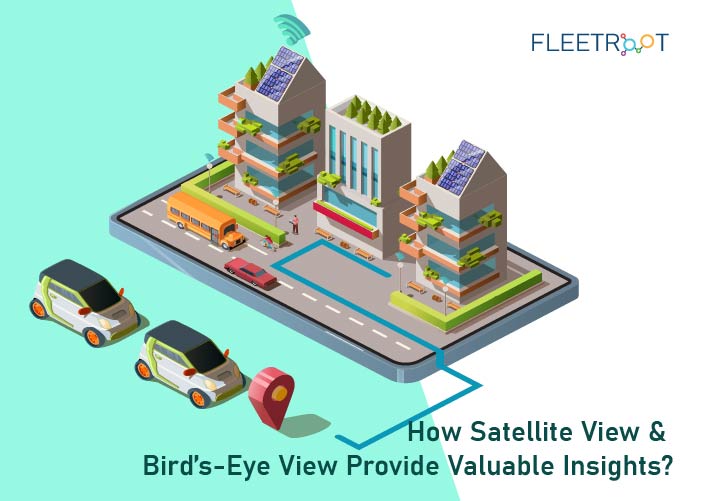Manual operations are very time-consuming and can produce inaccurate results due to human error.
Asset tracking software helps companies to automate their operations, and help in tracking asset and user locations, managing work performance, and asset maintenance.
This guide outlines the common functionalities and capabilities of an asset tracking system and its various attributes that buyers should look for while purchasing one for their business.
SYSTEM FUNCTIONALITIES & CAPABILITIES
1.Tracking Asset Location through barcode labels or RFID tags:
Barcoding, Radio-frequency identification (RFID) tagging, or QR coding helps you to tag an asset and quickly retrieve data about it.
Companies can print barcode or QR code labels and attach them to the asset.
Workers can then scan the barcode with a hand-held reader or scan a QR code via a smartphone to retrieve important information about that asset while performing their duties.
The system also helps managers to detect any theft, misplacement, or unauthorized usage of assets. It helps them to easily retrieve the asset when misplaced or deal with insurance agencies when theft occurs.
2.Asset Life-cycle Management:
The system facilitates you to easily manage the lifecycle of all your assets.
It helps you to enter, store, and track every single detail of an asset in the system, such as asset age, location, condition, maintenance schedules, repairs, and other crucial information.
3.Work Order Management:
Many asset tracking systems include work order management functionality, which allows the organization to create and review work orders and assign them to appropriate personnel.
4.Scheduled Maintenance:
Maintenance managers use the asset tracking system to monitor all the assets and schedule their periodic maintenance and automated service sessions for timely servicing.
This ensures that the assets are at peak condition and can perform assigned tasks efficiently.
It helps to reduce asset downtime.
5.Calculating Depreciation:
The Depreciation functionality of the software assists companies in calculating and recording depreciation for each tangible or intangible asset to optimize cost-effective functions.
Users just need to enter basic information about an asset, such as date of purchase, acquisition value, and estimated service life.
Then, users select a depreciation method like straight-line, double-declining balance, MACRS, etc., to have depreciation values calculated automatically.
6.Asset Lease/Rental:
Some companies have assets leased or rented out. This should be documented so that an asset can be restored if lost or damaged.
Also, if a repair is due, then the user can identify where the asset is and in whose possession it is.
The asset tracking software allows users to document assets’ check-out and check-in dates, assign an employee to an asset, and more.
7.Mobile Apps:
Mobile capabilities are a major part of asset tracking, increasing the efficiency of users and giving them access to asset data when needed.
Users can download native apps for mobile devices and scan bar-codes or QR codes to instantly view information about an asset.
8.Stock Management / Inventory Management:
The inventory management capabilities can use the barcoding system to update inventory quantities in real-time. The system allows users to simply scan a barcode and change the values for certain items as they are consumed.
9.Availability Calendar for Advance Bookings & Reservations:
The availability calendar allows companies to view the availability of assets at any point in time.
It allows them to make bookings and reservations in advance for available assets.
10.Reports & Analytics:
The analytics tool of a good system allows you to create customized reports easily.
Asset report analysis and asset performance reviews provide deep insights into the performance of your assets.
These help you to identify areas that needs attention and improvement.
Asset tracking also allows you to forecast future demands and changes in consumption patterns.
11.Meeting Compliances:
The asset management tools enable you to track information regarding certain regulatory compliances and certifications.
The system also enables you to meet all government regulations by organizing frequent inspections and audits.
SYSTEM ATTRIBUTES
1.Comprehensiveness:
A system that has limited functionalities will hamper your operations. So, choose a system that offers a variety of features and covers your entire workflow.
Each functionality of the system should be extremely user-friendly and easy to use.
2.Availability on the Cloud:
The system should be accessible anytime, anywhere, and from any device.
The system should be available on the cloud to give your business the ability to expand and scale up operations and increase security.
3.System Security:
The system should allow you to set up data administration tools.
You should be able to:
define which users will have the access rights to specific assets
define restriction rules, such as what can be viewed and/or edited
4.Ease of Deployment:
Since data migration is one of the biggest concerns, you must ensure that the system uses a simple and easy deployment method.
5.Customization:
The system should be flexible and customizable to specific business workflows.
You should be able to add customized fields to your asset database.
You should be able to transform your data at any time.
6.System Upgrades:
Choose a system that adapts to the changes, trends, and technological advancements occurring in your line of business. The system should be upgraded with continuous feature updates.
7.Technical Support:
The system vendor should provide all the technical support during the on-boarding process and post-implementation.
Conclusion:
Asset tracking software caters to a variety of asset-intensive industries, such as manufacturing, healthcare, fleet management companies, real estate, and other industries.
With many different software options available in the market today, you must be careful in your selection.
While choosing a software, make sure it has all the functionalities and capabilities that are required for your business workflows. You may want to take a demo and use free trial versions of different systems to know how they work, and how well they fit your company’s needs.
So, are you ready to deploy a real-time GPS tracking system to optimize your asset management?
Click here to read on How GPS Tracking Helps Different Types of Fleet Owners


